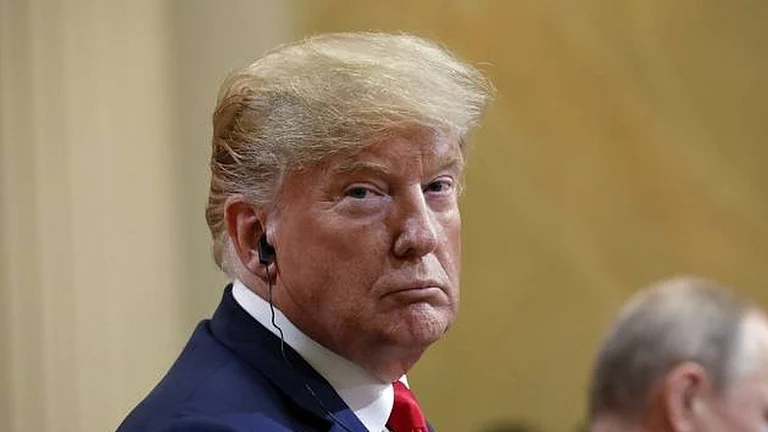Come to think of it, it is a bit odd that T.N. Ninan has not published a book earlier. With so many columnists republishing their columns in books, Weekend Ruminations (in Business Standard) might have so very easily met that fate. The twain of columns and books should generally not meet, a principle Ninan believes in.
The Turn of the Tortoise has 18 fresh essays and the first sentences of Acknowledgements are worth quoting: “This book began as a joint exercise with Vijay Joshi, emeritus fellow at Merton College in Oxford, who proposed the idea over a lunch, in January 2012. We worked on book contracts and then the reading and writing, till it became clear that the two writing styles would not fit well between the same covers. We decided, amicably, to do two separate books and to minimise the overlap.” This was a sagacious decision. It is difficult to contemplate a book written by Vijay Joshi and Ninan together.
The Indian economy has been compared to several animals. In this case, Ninan gives us the tortoise. This is an implied reference to the hare (slowing down in China) and the tortoise fable, presumably Aesop’s version and not Lord Dunsany’s. (In the Dunsany version, the hare found the idea of racing with a tortoise stupid and stopped running.) The 18 essays are divided into six heads, but their titles don’t always convey what terrain the essays cover. Looking at the essays, the ground covered includes the size of India’s economy, a thumbnail sketch of pending reform areas, the China phenomenon, global forays by Indian enterprises, cronyism, manufacturing, government failure, corruption, poverty reduction, consumption distributions, political shifts, the environment, international relations, defence and climate change. In choosing areas in any book, there are subjective biases and errors of omission, rarely of commission. Had he had unrestricted choice, Ninan would probably have had more on education, health, agriculture, rule of law, the public sector and the financial sector.
Ninan writes well. Who does he write for? Ninan is a business journalist. He is not a career economist. Therefore, he hasn’t written this book for the career economist. He has presumably written it for the general reader, with an interest in business and economics. The career economist will find little in the book that is novel, though there is indeed a refresher course element. The reason Ninan is a rarity among economic journalists is because his assertions are backed up with references (in the notes) that no purist career economist can complain about.
The last essay looks ahead for the next ten years and specifically mentions three mega trends—a change of scale in markets (through income growth), the ‘unwilling’ retreat of the state and a shift in the centre of gravity from New Delhi to state capitals. In 1991, few would have been able to predict changes the Indian economy has witnessed in the last 24 years. But these three mega trends are certain.
This extrapolates into a broader point. Ninan has played safe. He has pulled his punches and has been polite towards everyone. There are no unexpected statements in the book. (Had they remained confined to the book, remarks at the book launch would also have remained sedate.) Ninan is always a gentleman and is never unkind, in the written word as well as in the verbal.
That being said, even in comparison with the ongoing ‘Weekend Ruminations’, it is a surprisingly muted voice. (Perhaps the fire and brimstone has been saved for Vijay Joshi.) Let me give him the last words. “The reassuring facts in a broadly hopeful scenario tell that the directions of change are overwhelmingly positive, and that the system as a whole has a bedrock of stability that is not affected by the surface churn. That is why each generation of Indians has been able to say with confidence that the life of the next generation will get better for larger numbers—not at optimum but at what appears to be acceptable speed, and not wholly but very substantially.” Those are the closing sentences. The reference to ‘Tryst with Destiny’ notwithstanding, these don’t sound like Ninan’s words. They sound more like Humphrey Appleby’s. I had expected more. But let me not be too uncharitable. Especially if you are a general reader, you will form a very good idea of the challenge and promise of India’s (economic) future, the subtitle.
The cover illustration doesn’t have a tortoise. Instead, it has two ants rolling along the Ashoka Chakra. I wonder if this is a deliberate allusion to a completely different Aesop’s fable (the ant and the grasshopper). That’s not a bad allegory either. At least in US economic debates over inclusion, the ant and the grasshopper have been pitted against each other. Ants or tortoise, read the book.
***
The Word
First at The Economic Times and then at Business Standard, T.N. Ninan took pink papers out of the stultifying climes of Dalal Street, making business journalism accessible for the general reader. He is chair of the trust floated by the Bangalore billionaires to encourage free-spirited media.
























